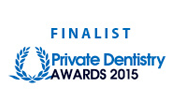Choosing Invisible Braces Over Traditional Braces
Are you considering braces in Nottingham for wonky teeth? Does your gappy smile leave you feeling self-conscious? Do you long to fix troublesome bite problems and relieve their symptoms? If you answered ‘yes’ to any of these questions, you might need to consider orthodontic treatment at Arnold Dental Practice. A good option for you may be Invisible braces.
Choosing a brace is no longer a one-size-fits-all approach. Impressive technology has shaped the treatments we offer and even improved the results at the end. Where once traditional braces were the only option for people looking to straighten their teeth, there are now countless types of brace to weigh up. Today we’ll talk about whether you should choose something more traditional, or a modern option that’s more discreet for your smile.
What Are Traditional Braces?
First, let’s look at traditional braces and how they work. Traditional braces are just another word for fixed braces – the type that an orthodontist fixes to your smile in the dentist’s chair. Because of this procedure, as you might guess, fixed braces can’t be removed – except at the end of your treatment. So, some patients find them quite difficult and inflexible.
Traditional braces are typically metal-coloured, but as more and more people seek discreet treatment, styles and designs have moved with the times. You can now find fixed braces with tooth-coloured wires and clear brackets, which means your braces can be much more discreet
What Are Invisible Braces?
When most people mention invisible braces, they’re talking about brands like Invisalign and Damon. However, these are two very different approaches to straightening your teeth. Taking the first, Invisalign, it’s good to know that this is a removable choice for your smile. While we do advise between 20-22 hours wear each day, you can take this style of brace out for eating, cleaning your teeth (and the aligners) and even a quick break. Invisalign is made of clear, durable plastic, so it’s not very noticeable on your smile.
Damon, by contrast, is fixed to your smile – but in this case, it’s fastened to the backs of your teeth. Another name for the treatment is lingual braces.
One type of brace we offer here in Nottingham, which is taking off in terms of popularity, is SmileTRU braces. These work in a similar way to Invisalign braces.
Which Brace Should I Try?
We’d recommend booking a personal consultation at our Nottingham dental practice to get more guidance on our types of braces, as well as an assessment of your smile and what treatment might look like for you. Find all the details you need on our contact page and allow us to help you achieve the brighter smile you’ve always wanted!








